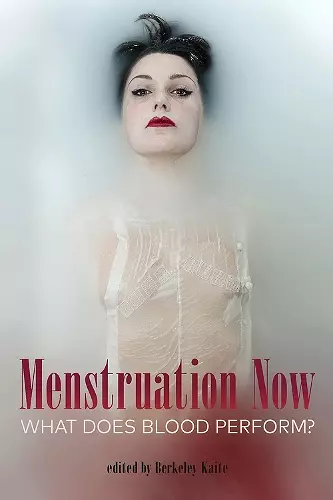Menstruation Now
What Does Blood Perform?
Format:Paperback
Publisher:Demeter Press
Published:1st Aug '19
Currently unavailable, and unfortunately no date known when it will be back

Each of the 8 chapters in this volume addresses menstruation and/or menstrual blood in various media sites with a view to answering the question, what does blood perform? Menstrual blood may be enduringly feminine but it is never just one thing. Menstruation Now contains a chapter on advertising: the shifting “conversation” of menstruation in contemporary advertising leads to youtube videos and other online sources. Fiction: The central character in Alice Munro’s short story, “Chance,” discovers her period while on a train ride. Menstrual blood metaphorically spills over to inform the leaky narrative, the shape of the story, and the “female complaint.” Legal Discourse: Both sides in the legal battle over whether Terry Schiavo (who had been in a persistent vegetative state) should live or have the right to die invoked the fact of her menstrual blood to signify what each wanted, i.e., different definitions of womanhood and life. Pornographic films: Menstrual blood in pornographic films is analyzed as a “para-text,” what happens off-scene but is still caught on camera and becomes part of the fluidity of desire. A media icon: Jacqueline Kennedy Onassis’s phantasized menstrual blood – her uterine utterance – is argued to take the place of the verbal utterances she wouldn’t emit (she was a witness to, but wholly silent about, the assassination and her marriage before that). Art: Contemporary menstrual art is examined with a view to understanding how it exposes, normalizes and aestheticizes the phenomenological experience of bleeding. Film: Menstrual blood in Ingmar Bergman’s film Cries and Whispers is seen as a liminal space of transition and ritual: both blood and liminality are charged with irrationality (and hence the potential for affirmation and re-performance). Television: Orange is the New Black (Netflix) contains comical plot-lines about menstruation and menstrual products in its prison setting. Unruly blood is analyzed in conjunction with characters – inmates – who are always-already unruly: they are in prison, i.e., in necessity of restraint. Feminine comedy itself is a challenge to discursive authority; menstrual blood in this context is positioned as a noisy disruption and reigned in by the small screen and the comedic apparatus. In sum, blood is performative and never means only one thing. It can thus, now as always, be performed again in the service of new meanings and experiences.
“This book is not only smart, it is fun. It flirts with the margins of discourse on women's bodies, and then breaks their hearts. It ranges across time and form, drawing from multiple disciplines and forging connections among them. Students and professors of feminism in all fields will find things to delight them. Patriarchy, watch out: there will be blood!” -- Kate Kane, Ph.D. Department of Communication, Media, and Theatre, Northeastern Illinois University
ISBN: 9781772581881
Dimensions: unknown
Weight: unknown
180 pages